Before we talk more about poor water quality, it is important to understand the characteristics of a good quality stream. Natural streams in undisturbed settings have a number of characteristics that are illustrated below:
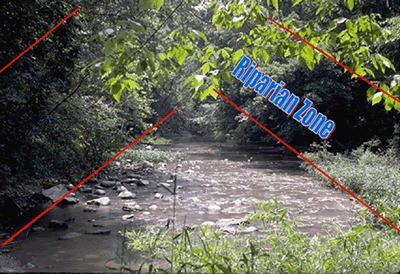 Good streams have vegetation along the banks that hold down solids and shade the stream. This area is called the riparian zone.
|
|
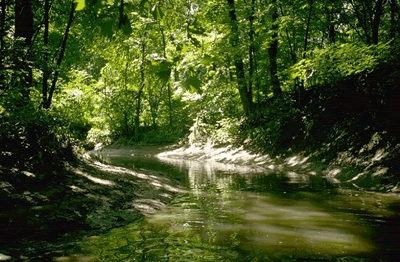 Good streams meander - they have natural curves that slow down the water so that it will not erode the banks. |
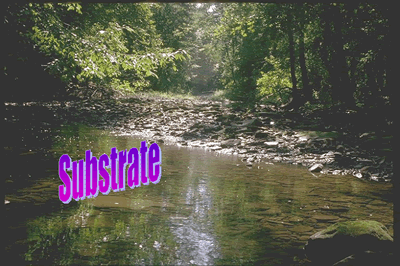 Good streams have a rocky bottom or substrate that is "clean". |
 Good streams support a diversity of aquatic life including fish and macroinvertebrates (aquatic insects). |
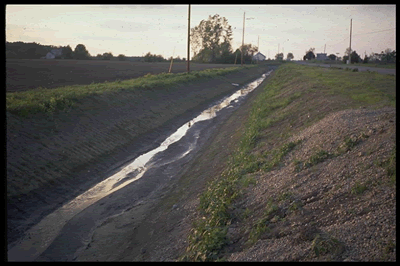 Streams through agricultural areas are often straightened. This removes habitat and results in water running faster and causing more erosion of the bed. |
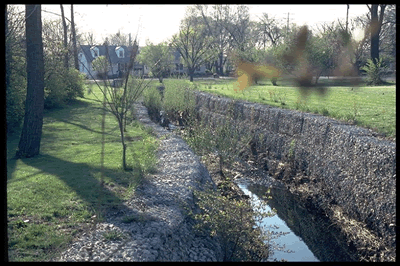 Urban streams are often straightened and channelized. |
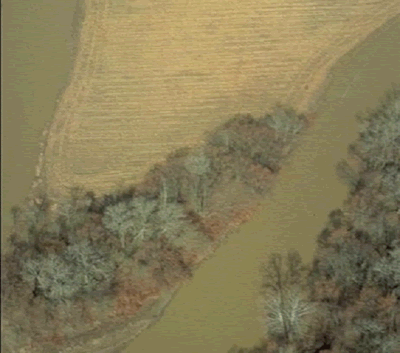 Removing vegetation causes heavy sediment loads which smothers bottom animals and plants. |
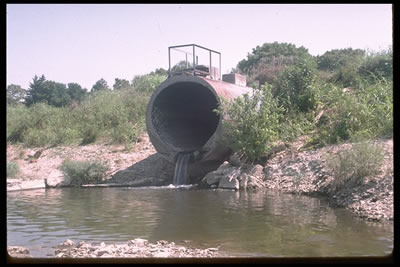 Industrial pipes discharge wastes directly to streams. |
|